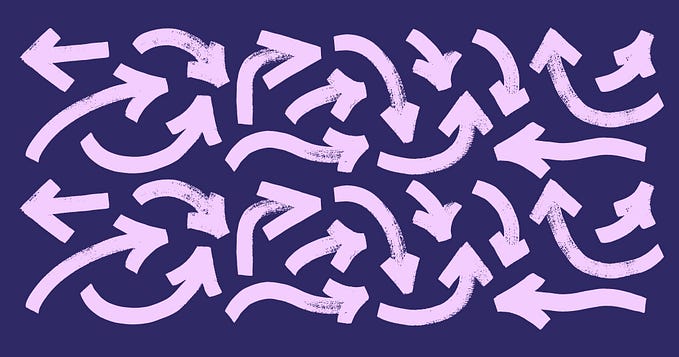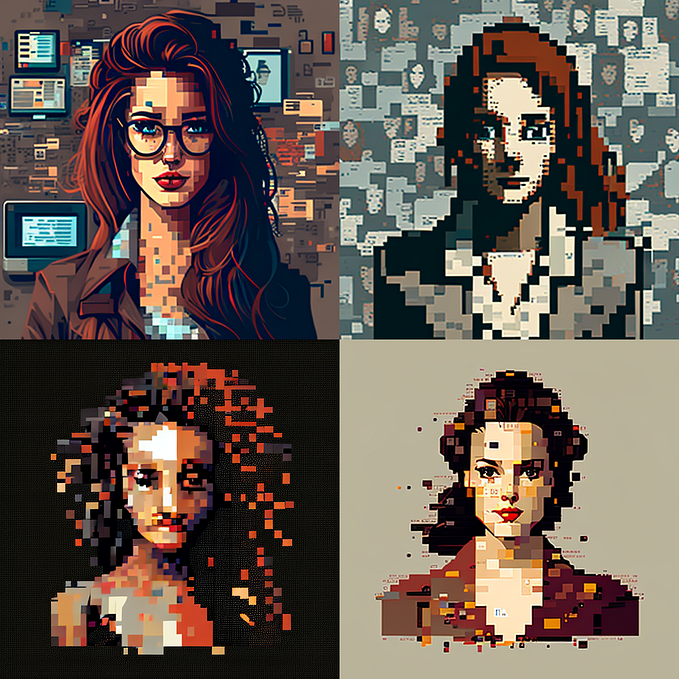Creativity lies in the paradoxes
The inner and outer struggles of a creative life

Singers, artists, painters, designers…creatives come in all shapes and sizes. And while we may all look, sound, and act differently, we all partake in the blessings and curses of a creative life.
On one hand, we’re filled with ideas popping-in from left and right. On the other hand, it can feel overwhelming to try to put them down on paper. We’re inspired and determined. Yet, anxious and uncertain.
We think big, but we’re afraid of the unknown.
It’s a world of contradictions, tensions, and paradoxes.
These tensions can feel paralyzing at times, but they are actually essential in order to live a creative life.
Embracing Paradoxes.
I recently started reading Brené Brown’s 2023 book, Atlas of the heart. In it, she highlights how paradoxes play a vital role in navigating life’s tensions.
“Embracing the paradox teaches us how to think deeper and with more complexity… it moves us away from oversimplifying how systems, organizations, and humans work.”
When I first read this quote, I thought to myself “wow, that’s what good design is really all about!” — deep thinking, navigating complexity, and resisting oversimplification in service of more human solutions.
Brown also explains that “paradoxes can’t be fully resolved using rationality and logic.” This is maybe what I love most about creative work. It goes beyond logic. The work engages with emotions — both of the audience, and of the creator. Our products, services, and messages help the audience FEEL something. That’s how customers stick around.
A Creative life needs both good and bad emotions in order to bring forth depth, texture, contrast, intrigue, and inspiration in our work. Yet, this is a paradox, too.. Many people in other fields look at our meandering paths and ask, why would anyone put themselves through that? Why would you pick a creative career when it’s so filled with tumult and uncertainty?
But that’s the thing about creativity. You don’t pick it. It picks you.
Brown’s words around paradoxes reminds of one of my favorite creative tools — Vent Diagrams.
Vent diagrams are contradicting truths towards collective liberation, assembled by artist @onespacefor & teacher @eem.pdf. Through Vent Diagrams, individuals are encouraged to draw two two circles with different statements that are both true, and contrasting, at the same time. The exercise helps us become more comfortable holding contradicting ideas in our head, without fighting to declare one right and the other one wrong.

Personally, this practice has helped me move through creative tensions during creative projects. And, it’s also helped me feel more at ease when faced with difficult decisions…whether related to creativity or not.
Sensitivity and self-doubt.
As creatives, we’ve been blessed with the superpower of sensitivity. We feel things. Constantly. We love a lot. We dislike a lot. We experience a lot of feelings in general. Our sensitivity superpower is what helps us connect and encourages us to question conventions, and it’s what makes us analyze things that other people just brush-off. All of these things are what compel us to create something that hasn’t been done before, and to pursue it with such intensity that we can lose sight of other things around us.
But…the same emotional sensitivity that helps us connect also causes emotional breakdowns. In my own creative career, I’ve experienced a decent amount of self-doubt. When I encounter something new, or challenging, there’s an all-too familiar voice inside telling me, “you can’t do it,” or asking “who do you think you are?”
These two halves — sensitivity and self-doubt — are somehow also part of the paradox of creativity. We need the sensitivity to connect with others and to create new, and interesting things. But we also recognize that if left unattended, it can hold us back from dreaming big and realizing our full potential.
Of course, it doesn’t help that our field is filled with rejection, critiques, and complaints as part of our everyday routines. In college, I had a teacher who threw our drawings off the balcony of our two-story building if he didn’t think they were good enough. Most workplace critiques aren’t quite this dramatic, but the impact is largely the same.
The professional creative world is one in which the idea of “fair” doesn’t exist, and the failure rate outnumbers the success by a million. As creatives, we know that trial and error is needed to improve or innovate. But in the moment of receiving harsh feedback or criticism, it’s hard not to listen to our own, and other people’s, doubts and believe that they’re true.
Contradictions, creativity, and life
Journalist and author Elizabeth Gilbert often highlights how life is filled with contradictions. And, she also makes it clear that this is essential. In this post, she writes:
“The most peaceful people that I know and the most wise people that I know are the ones that have created enough internal space to be able to allow for all parts of themselves to coexist despite the contradictions. They have room for their creativity. They have room for their fears. They have room for their dignity. They also have room for their shame. They have room for the parts of themselves that are glorious, devine, and beautiful. And they have room for the things that are petty, jealous and ridiculous.”
Gilbert may be speaking about all kinds of people in very broad terms here, but when I first read it, I couldn’t help feeling she was directly speaking to, and about, lifelong creatives. Maybe it’s because for me, it’s hard to imagine a life that is NOT creative. Somehow, it’s just ingrained in my soul, and my DNA.
Letting go of fixing
Oftentimes, when I write about what it means to pursue a “creative life,” I realize that what I am writing about might “just” be about life in general. A (creative) life is full of contradictions, and even though our minds were designed to see things in binary terms, maybe we shouldn’t try to “fix” or change our natural complexities. Maybe we’d experience less angst about our internal conflicts if we stopped wishing that things were easier or different, and instead, found ways to make room for all of our feelings to coexist within us.
Learning to navigate tensions and paradoxes isn’t just the job of a creative.
It’s the job of a (creative) lifetime.









